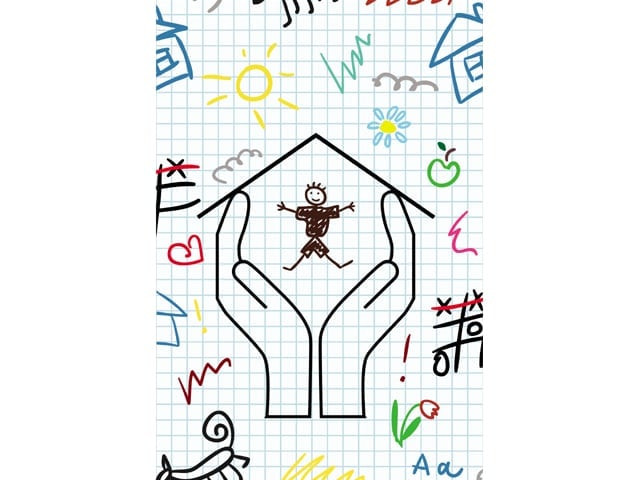Childproofing your house
Seventy-two per cent of children’s deaths from injuries are either at or around the home: Study.

Childproofing your house
This translates into a staggering 72 per cent of deaths either at or around the home, according to the findings of another study, which was conducted a year and a half ago by five emergency departments, Jinnah Postgraduate Medical Centre, Civil Hospital, Abbasi Shaheed Hospital, Liaquat National Hospital and the Aga Khan University Hospital (AKU), over a three-month period.
Statistics from the Pakistan Health Demographic study reveal that the most common cause of injuries was drowning, at 22 per cent, with road traffic injuries and falls next, at 12 per cent.
In the city hospital collaborative study, 566 children were analysed. Sixty per cent of their injuries were caused when they fell down, mostly on the stairs. Around 11 per cent of the injuries were dog bites and burns, a majority of the time by hot beverages such as tea.
Teaching and demonstrating
Currently, the research team of the Department of Emergency Medicine at AKU is working on compiling data they had collected from 503 households of a lower-income area in the city. Among other criteria for a household to be eligible for the study was primary education among parents who had children under five years of age.
The research team, visited the households under the supervision of senior instructor Uzma Rahim Khan. In half of them, they offered pamphlets on implementing safe measures in the home. These measures, all written in Urdu, included keeping the stove at a greater height, the toxins in locked cabinets and switches plugged. Meanwhile, the other half was given a demonstration or a tutorial on how to implement the same measures.
A week later, the team first visited the households where only the pamphlets were distributed. They discovered limited success — some households were completely unresponsive to incorporating the methods advised as they did not see the “benefit” of doing so.
The other households, in which a demonstration and a quick question-and-answer session took place, was by far more receptive upon the team’s return and had made several key changes in their homes. “Many had put their gas stove, initially on the ground, on to a counter,” said Rubaba Naeem, a data collector for the project. “Wiring was properly tied up and hung on hooks to keep them out of children’s reach while parents in a few double-storey houses had also built or installed gates at the top and bottom of their stairs, covering the sides with a railing.”
“Of course, there was some resistance to the changes that cost more money,” put in Nukhba Zia, the team’s research associate.
Another factor behind resistance to change is the joint family system, in which “grandmothers thought they knew best” and didn’t need others to tell them how to raise their children, the team members said.
“On the other hand some of the husbands were more appreciative of our efforts,” Naeem said, adding, “they were happy that someone was finally putting some sense into their wives.”
Interviews with parents
Meanwhile, The Express Tribune also talked to other parents in the city to find out how they were protecting their children.
L Barry, a working woman and the mother of a two-and-a-half-year-old girl, said, “Among the first things I did was to cover all the sharp edges in the house.”
She also made sure that her little girl did not have access to any age-inappropriate or small toys which she could swallow and choke on. “One thing I did not do was cover the winding stairs,” she admitted, but quickly added that she never left her child unsupervised.
A homemaker since her first son was born three years ago, Sana Mahfooz also has an 11-month-old baby girl. “We live on the 15th floor,” she said, which is why the balcony door is always locked. But she also makes sure that her children do not develop a fear of heights and so “supervised entry into the area is allowed”.
Not too long ago, Mahfooz’s little son had decided his toy truck needed to be warmed up and had innocently slipped it into the microwave. Luckily, his mother was nearby and good to react. She managed to extinguish the flames that had enveloped the appliance and her children remained safe.
“He [her son] can climb now, so I have to be extra vigilant. All toxins are in a locked cabinet, sharp objects are in child-locked drawers, sockets have covers, no unsupervised elevators rides or climbing up and down the stairs. You just need to be at the top of your game. One small mistake could result in very severe consequences and no one wants that,” the young mother concluded.
Households surveyed by the AKU team:
50.4% were without a gate/barrier at the stairs
40.7% were without a railing/bars
34% had cleaning supplies in reach
15.3% had medicines within reach
45% had an iron within reach
16.7% had open fire within reach
48.4% had an accessible rooftop without walls/railing
55.6% had the stove within reach
55.6% had the water heater within reach
Published in The Express Tribune, December 29th, 2010.


















COMMENTS
Comments are moderated and generally will be posted if they are on-topic and not abusive.
For more information, please see our Comments FAQ